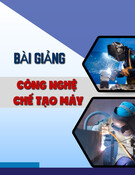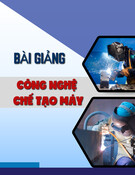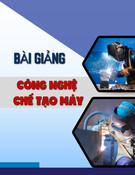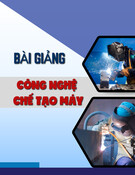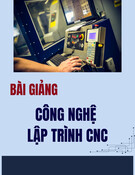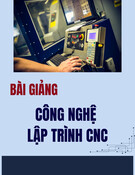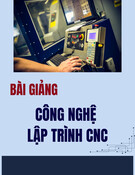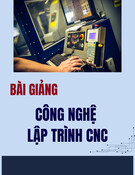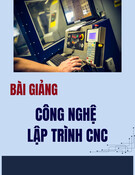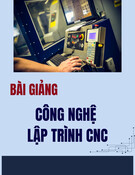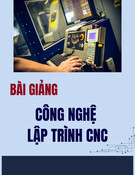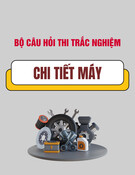
http://www.iaeme.com/IJMET/index.asp 273 editor@iaeme.com
International Journal of Mechanical Engineering and Technology (IJMET)
Volume 10, Issue 03, March 2019, pp. 273–283, Article ID: IJMET_10_03_028
Available online at http://www.iaeme.com/ijmet/issues.asp?JType=IJMET&VType=10&IType=3
ISSN Print: 0976-6340 and ISSN Online: 0976-6359
© IAEME Publication Scopus Indexed
EVALUATION OF A LOCUST BEANS SEED
DEHULLING MACHINE FOR SMALL SCALE
FARMERS
Timothy A. Adekanye, Elijah. A. Alhassan, Abiodun A. Okunola., Akande, D. Iliyah,
Christiana O. Erinle, Isaac B. Familoni and Adeniyi Olaniyi
Department of Agricultural and Biosystems Engineering, Landmark University, P.M.B. 1001,
Omu - Aran, Kwara State, Nigeria
ABSTRACT
A locust bean dehulling machine was fabricated and evaluated using locally
available materials. The machine performs dual operations of removing the seed coats
and cleaning. Components of the machine include the frame, hopper, dehulling
chamber, water container, discharge outlets, set of gears and bearings in operation.
In operation, locust beans seeds introduced via the hopper moved to the auger which
separates the soft pulp and conveys the material into the dehulling chamber. The seeds
were washed in the dehulling chamber while the coat (residual waste) passes through
the sieve into the water trough where it was discharged through the waste outlet.
Throughput capacity, output capacity, recovery percentage and cleaning efficiency
were 264.0kg/hr, 98.48%, and 98.75%, respectively. This machine may find
applications in the processing of locust beans.
Key words: Agriculture, locust bean, dehulling, evaluation, small scale farmers
Cite this Article: Timothy A. Adekanye, Elijah. A. Alhassan, Abiodun A. Okunola.,
Akande, D. Iliyah, Christiana O. Erinle, Isaac B. Familoni and Adeniyi Olaniyi,
Evaluation of a Locust Beans Seed Dehulling Machine for Small Scale Farmers,
International Journal of Mechanical Engineering and Technology 10(3), 2019, pp.
273–283.
http://www.iaeme.com/IJMET/issues.asp?JType=IJMET&VType=10&IType=3
1. INTRODUCTION
African locust bean (Parkia biglobosa) is very important for food security particularly during
food shortage and drought periods in the arid and semi-arid regions of Africa [1]. Parkia
biglobosa is a perennial deciduous tree with a height ranging between 10 and 15 m. It may be
as high as 20 m under exceptional conditions. It has a rounded or umbrella shaped spreading
crown, with drooping leaves and is without spines (Fig. 1). The thick bark is grey in colour
with a scaly texture, and has an orange coloured slash. It is a native to Africa and an important
multipurpose tree of West Africa Savannah land, and one of the most common species of the
parkland agro forestry system.

Evaluation of a Locust Beans Seed Dehulling Machine for Small Scale Farmers
http://www.iaeme.com/IJMET/index.asp 274 editor@iaeme.com
African locust bean is a food species whose relevance is recognized widely in many
societies on the African continent because it is a healthful food and a source of livelihood for
a great number of people. Rural dwellers in developing countries like Nigeria who could not
afford animal products which are rich sources of protein because they are either too expensive
or simply unavailable find the African locust beans seed essential as protein substitute. The
pods are harvested and processed into the fermented product known as ‘Iru’ in Southern
Nigeria, ‘Dawadawa’ in Niger, Northern Nigeria and Ghana, ‘Ogiri’ in Eastern Nigeria,
‘Soumbala’ in Burkina Faso, Mali, Cote d’Ivoire and Guinea respectively [2,3].
Figure 1 Locust bean pods
Processing of agricultural crops includes post-harvest activities that maintains, raises the
quality or changes the form or characteristics of the crops into marketable products [4].
Dehulling is a process employed to get rid of the outer pericarp and testa (hull) of most cereal
grains, grain legumes, nuts and oilseeds using mechanical means [1]. Dehulling is a very
important process although hectic when carried out manually using human power. Dehulling
enhances the seed quality conditions. The popular method of processing African locust bean
in Nigeria is manual or traditional. Locust bean seed has a very hard, water-impermeable testa
and therefore prolonged cooking is necessary during processing to soften the seed coat prior
to de-hulling. Pre-soaking for 12 hours and cooking for 30 min in a pressure cooker is
sufficient to soften the seed, but removal of the seed coat is more difficult [5].
The drudgery involved in dehulling locust bean seed by traditional methods has been
identified as one of the major problems hindering the realization of the full potentials of locust
bean as important food material. Traditional methods of processing African locust bean
produce a low yield and increase the cost of processed seeds. The market price of the
processed products can be reduced for local consumption as a staple food and enough quantity
can be processed if the manual dehulling approach is replaced with mechanized dehulling.
Many researchers have made attempts to mechanize processes involved in the production
of African locust bean. Many mechanical dehullers have been developed to reduce the amount
of time and labour required in the manual de-hulling of many agricultural crops. Olaoye [6]
developed small scale equipment for depulpping locust bean seeds. Akande et al [7] described
some wet dehulling machines developed by the National Centre for Agricultural
Mechanization, (NCAM) Nigeria. Audu et al. [8] developed a concentric cylinder locust bean
dehuller. Nnamdi et al [9] evaluated the performance of a breadfruit dehuller. Kaankuka et al
[10] reported the evaluation of a dehuller for Acha (digitaria exilis). Adeleke and Ogunjobi
[11] and Ogunnigbo and Adetan [12] and worked on mechanical processing machines for
coffee and maize respectively.
Mechanization of dehulling process will help locust bean farmers and small scale
producers in reducing the amount of labour employed and the drudgery involved in the
process among other benefits. Therefore, the main objective of this study was to use locally

Timothy A. Adekanye, Elijah. A. Alhassan, Abiodun A. Okunola., Akande, D. Iliyah, Christiana O. Erinle,
Isaac B. Familoni and Adeniyi Olaniyi
http://www.iaeme.com/IJMET/index.asp 275 editor@iaeme.com
available materials to design, fabricate and evaluate a simple to operate locust bean dehulling
machine for small scale locust bean farmers. Specific objectives were to investigate the
machine in terms of cleaning efficiency, percentage recovery and throughput capacity. There is
a general awareness in Nigeria and other developing countries that the rapid development of agriculture
depends, to a large extent, on the successful introduction of modern and small scale agricultural machinery [13].
Therefore, there is the need to develop a small mechanical device for small scale locust bean processing This
study will contribute greatly to existing knowledge on locust beans processing with a view of
increasing its production and reduce wastage and increase quality of the locust beans and
serve as a baseline for further research work.
2. MATERIALS AND METHODS
2.1. Materials selection
The factors considered in the development of the wet locust beans seeds dehulling machine
includes: cost of the materials, construction technique, availability of materials, durability of
materials, cost of maintenance and effect of the material used on the food material.
Galvanized steel was used for the dehulling and washing chambers, while angular mild steel
was used for the frame of the machine for rigidity and stability.
2.2. Machine description
Materials for construction of locust bean de-hulling machine were selected based on some
factors which includes; availability of materials, durability, strength, safety, maintenance and
operating cost. The design philosophy was to reduce drudgery in the process of de-hulling of
locust beans seed. The fabricated locust bean machine consist primarily the following units as
shown in Error! Reference source not found.
Hopper/Loading tray: It is the part where the locust beans are being fed into the separation
chamber. It could also be referred to as the introductory section of the locust beans into the
de-hulling chamber. It is made of mild steel and identified by a trapezoidal shape to enhance
the movement of seed during the de-hulling process. It has a length of 600 mm, width of 300
mm and depth of 400 mm.
Separation chamber: This is the part of the wet de-hulling machine where the pulp is
initially separated from the seed. It undergoes a rotary motion resulting in the removal of the
coat and transported with the seeds into the de-hulling chamber.
Dehulling chamber: This is the main component of the washer and it was made from 1.5 mm
thick galvanized sheet. It comprises of two cylinders; the small and big cylinders which are
horizontally attached to each other and are segmented into two equal halves, with one of the
segments perforated. The small cylinder has the overall dimension of 148.8 mm diameter and
length of 170 mm
Water container: It is cylindrical shaped and made from 1.5mm galvanize sheet with overall
dimension of 255 mm diameter and length 600 mm. It serves the purpose of holding water for
final cleaning of the seeds and it is situated beneath the de-hulling chamber.
Frame: The frame is made from 45 mm x 45 mm x 45 mm angle iron and serves the purpose
of holding the whole system in a rigid position.
Discharge outlets: The machine has two outlets; the first outlet is beneath the small cylinder
and serves as the waste material (slurry) outlet while the second one is at the extreme end of
the big cylinder and use for discharge of the washed seeds.

Evaluation of a Locust Beans Seed Dehulling Machine for Small Scale Farmers
http://www.iaeme.com/IJMET/index.asp 276 editor@iaeme.com
a) Isometric view b) exploded view
Figure 2: Isometric and exploded views of the locust beans de-hulling machine
2.3. Principle of operation
Machine for dehulling and separating of the boiled locust beans from its coats had two
compartments; dehulling cylinder and separating cylinders. The dehulling cylinder houses the
dehulling shaft. A petrol engine provides drive through belt connections via pulley to the
shaft. The dehulling unit comprises the hopper, the cage which houses the rotating auger. The
cage is lined with abrasive stainless-steel sheet. The function of this part of the device is to do
the actual dehulling of the locust bean. As the dehulling shaft rotates with the help of
bearings, it provides drive to the stirrer inside the separating inner cylinder through the bevel
gear connections and pulleys. Boiled locust beans are being fed into the dehulling cylinder
through the hopper; the locust bean was de-hulled and at the same time conveyed through a
screw conveyor into the separating cylinders through the opening under adjacent end of the
dehuller cylinder. The stirrer which was being enclosed by the inner cylinder stirs or agitates
the de-hulled beans solution to dislodge the coats from the seeds. Centrifugation is a process
used to separate a mixture of substances with different densities. The centrifugal force is
created by the rotating spindle. The spindle carries harden wooden brush which helps create
turbulence in the water. The result of this is that the heavier cotyledons stays on the screen
with the rest displace to the water under the sieve thereby achieving separation.
The separating unit consists of the separation bowl, loaded with specially designed spindle
with brush that was bolted to create rotational motion necessary to effectively separate the
testa from the de-hulled seeds in the fastest possible time. The coat of the seed will sink
through the screen of the sieve and can be collected at the exit point at the bottom of the
separation bowl. The separating chamber operates under the principle of floatation with the
cleaned seed floating on top of the sieve. The de-hulled coats naturally sink in water while the
seeds float on the sieve. During operation, the turbulence in the separating chamber aids in
detaching coats that are loosely attached to the seed. The rotating shaft was driven by the
main shaft through bevel gear arrangement inclined at 90o. After the operation, the tap at the
base of the chamber shall then be opened for discharge of the dirty water and the testa of the
beans and the clean locust beans seed collected at the upper exit above the screen.
The fabricated locust beans wet dehuller was evaluated at the Farm Power and Machinery
Workshop of Agricultural and Biosystems Engineering Department, Landmark University, in
order to determine the optimum operating conditions at which maximum efficiency could be
obtained. A preliminary test was conducted at operating speed of 125 rev min-1 using locust

Timothy A. Adekanye, Elijah. A. Alhassan, Abiodun A. Okunola., Akande, D. Iliyah, Christiana O. Erinle,
Isaac B. Familoni and Adeniyi Olaniyi
http://www.iaeme.com/IJMET/index.asp 277 editor@iaeme.com
beans in pulpy media and a 2 Hp petrol engine as power source. Five samples (2.2 kg each)
were weighed to test the machine. The weight of washed seeds, weight of unwashed seed,
weight of the materials at each outlet, time taken to feed the materials and time taken to
discharge were collated for analysis and determination of the performance parameters.
2.4. Design analysis
Design analysis was carried out to determine the necessary design parameters, strength and
size of materials required for various machine parts in order to avoid failure during operation
of this machine.
Shaft design
Shaft design involved determination of the correct shaft diameter to ensure satisfactory
strength and rigidity when the shaft is transmitting power under various operations and
loading conditions [14]. Design of shafts of ductile material based on strength is controlled by
maximum shear theory. For a solid shaft having little or no axial loading, the ASME [15]
code equation is given as:
Where; d = diameter of the shaft, m; Mt = torsional moment, Nm; Mb = bending moment,
Nm; Kb = combined shock and fatigue factor applied to bending moment, Kt = combined
shock and fatigue factor applied to torsional moment; Ss = allowable combined shear stress for
bending and torsion for steel shaft, N m-2 and π = constant = 3.14.
The diameter was calculated as 18.5 mm and shaft of 25 mm was used in order to have a
higher factor of safety. The designed shaft satisfied deflection, torsional and critical speed
criteria.
Bevel gear
Bevel gears transmit power between two intersecting shafts at any angle or between non-
intersecting shafts. Bevel gears are widely used because of their suitability towards
transferring power between nonparallel shafts at almost any angle or speed. In order to get an
accurate understanding of the loads transmitted by the gear, the torque values were converted
to horsepower using equation (2);
Where; T is the applied torque and RPM is the operating speed of the gear shaft [16].
Size of hopper
The hopper was designed to have trapezoidal shape of length 600mm, width of 300mm and
depth of 400mm. The hopper of the machine was designed by using Equation (3);
A=2πr [r+h] (3)
Where, A = Area of cylinder, m2; h = height, m; r = radius, m; π = constant = 3.14. Given
that height and radius were 135 mm and 99 mm respectively, hence, A = 0.146 m2
𝑑3= 16
𝜋𝑆𝑠 × 𝐾𝑏𝑀𝑏 2+ 𝐾𝑡𝑀𝑡 2 1
2 (1)
𝐻𝑃 =𝑇∗𝑅𝑃𝑀
5252 (2)


![Bài tập tối ưu trong gia công cắt gọt [kèm lời giải chi tiết]](https://cdn.tailieu.vn/images/document/thumbnail/2025/20251129/dinhd8055/135x160/26351764558606.jpg)
